Giuseppe Caire
Integrated Massive Communication and Target Localization in 6G Cell-Free Networks
Oct 16, 2025Abstract:This paper presents an initial investigation into the combination of integrated sensing and communication (ISAC) and massive communication, both of which are largely regarded as key scenarios in sixth-generation (6G) wireless networks. Specifically, we consider a cell-free network comprising a large number of users, multiple targets, and distributed base stations (BSs). In each time slot, a random subset of users becomes active, transmitting pilot signals that can be scattered by the targets before reaching the BSs. Unlike conventional massive random access schemes, where the primary objectives are device activity detection and channel estimation, our framework also enables target localization by leveraging the multipath propagation effects introduced by the targets. However, due to the intricate dependency between user channels and target locations, characterizing the posterior distribution required for minimum mean-square error (MMSE) estimation presents significant computational challenges. To handle this problem, we propose a hybrid message passing-based framework that incorporates multiple approximations to mitigate computational complexity. Numerical results demonstrate that the proposed approach achieves high-accuracy device activity detection, channel estimation, and target localization simultaneously, validating the feasibility of embedding localization functionality into massive communication systems for future 6G networks.
On the Outage Probability of Multiuser Multiple Antenna Systems with Non-Orthogonal Multiple Access for Air-Ground Communications
Aug 27, 2025Abstract:This paper explores multiuser multiple antenna systems as a means to enhance the spectral efficiency of aeronautical communications systems. To this end, the outage regime for a multiuser multiple antenna system is studied within a realistic geometry-based stochastic air-ground (AG) channel model. In this application, users (aircraft) transmit air traffic management data to the ground station at a predefined target rate. Due to the nature of the AG propagation, we argue that the relevant performance metric in this context is the information outage probability. We consider the outage probability under three decoding approaches. The first is based on successive interference cancellation (SIC). The second extends the first approach by considering joint group decoding. The third is a version of the second that limits the size of the jointly decoded user groups in order to lower the decoding complexity. The results show that joint group decoding, even in groups of only two, can significantly increase the spectral efficiency in the AG channel by allowing a large number of aircraft to transmit over a non-orthogonal channel with very low outage probabilities.
Near-Field Integrated Imaging and Communication in Distributed MIMO Networks
Aug 24, 2025Abstract:In this work, we propose a general framework for wireless imaging in distributed MIMO wideband communication systems, considering multi-view non-isotropic targets and near-field propagation effects. For indoor scenarios where the objective is to image small-scale objects with high resolution, we propose a range migration algorithm (RMA)-based scheme using three kinds of array architectures: the full array, boundary array, and distributed boundary array. With non-isotropic near-field channels, we establish the Fourier transformation (FT)-based relationship between the imaging reflectivity and the distributed spatial-domain signals and discuss the corresponding theoretical properties. Next, for outdoor scenarios where the objective is to reconstruct the large-scale three-dimensional (3D) environment with coarse resolution, we propose a sparse Bayesian learning (SBL)-based algorithm to solve the multiple measurement vector (MMV) problem, which further addresses the non-isotropic reflectivity across different subcarriers. Numerical results demonstrate the effectiveness of the proposed algorithms in acquiring high-resolution small objects and accurately reconstructing large-scale environments.
Information-Theoretic Decentralized Secure Aggregation with Collusion Resilience
Aug 01, 2025Abstract:In decentralized federated learning (FL), multiple clients collaboratively learn a shared machine learning (ML) model by leveraging their privately held datasets distributed across the network, through interactive exchange of the intermediate model updates. To ensure data security, cryptographic techniques are commonly employed to protect model updates during aggregation. Despite growing interest in secure aggregation, existing works predominantly focus on protocol design and computational guarantees, with limited understanding of the fundamental information-theoretic limits of such systems. Moreover, optimal bounds on communication and key usage remain unknown in decentralized settings, where no central aggregator is available. Motivated by these gaps, we study the problem of decentralized secure aggregation (DSA) from an information-theoretic perspective. Specifically, we consider a network of $K$ fully-connected users, each holding a private input -- an abstraction of local training data -- who aim to securely compute the sum of all inputs. The security constraint requires that no user learns anything beyond the input sum, even when colluding with up to $T$ other users. We characterize the optimal rate region, which specifies the minimum achievable communication and secret key rates for DSA. In particular, we show that to securely compute one symbol of the desired input sum, each user must (i) transmit at least one symbol to others, (ii) hold at least one symbol of secret key, and (iii) all users must collectively hold no fewer than $K - 1$ independent key symbols. Our results establish the fundamental performance limits of DSA, providing insights for the design of provably secure and communication-efficient protocols in distributed learning systems.
Faster-than-Nyquist Signaling is Good for Single-Carrier ISAC: An Analytical Study
Jun 11, 2025Abstract:In this paper, we provide an analytical study of single-carrier faster-than-Nyquist (FTN) signaling for integrated sensing and communications (ISAC). Our derivations show that FTN is advantageous for ISAC, and reveal new insights that these advantages come from the fact that FTN signaling can effectively avoid the spectral aliasing due to the mismatch between the symbol rate and the bandwidth of the shaping pulse. Specifically, the communication spectral efficiency advantages of FTN signaling over time-invariant multipath channels are analytically shown, where both upper- and lower-bounds on the spectral efficiency are derived. We show that the gap between these two bounds corresponds to the potential signal-to-noise ratio (SNR) variation due to the presence of multipath delay and spectral aliasing, which diminishes as the symbol rate grows higher. Particularly, in the limiting case, this SNR variation disappears while the degree of freedom (DoF) of the system attain the maximum. Furthermore, the sensing advantages for FTN signals are verified in terms of the expected normalized squared ambiguity function. We show that FTN signals generally enjoy a more robust ranging performance. More importantly, we prove that FTN signaling can effectively avoid the undesired peaks in the considered ambiguity function along the Doppler dimension, thereby reducing the ambiguities in velocity estimation. All these conclusions are explicitly verified by numerical results.
Discrete Codebook Design for Self-interference Suppression in mmWave ISAC
Apr 22, 2025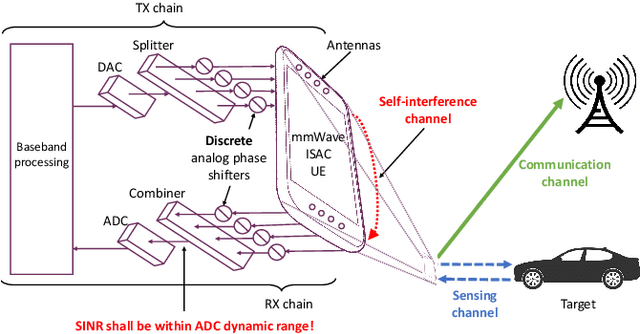
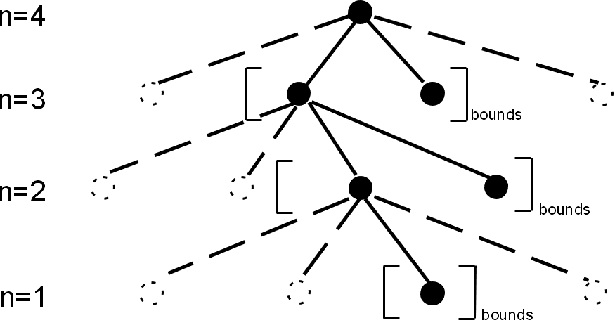
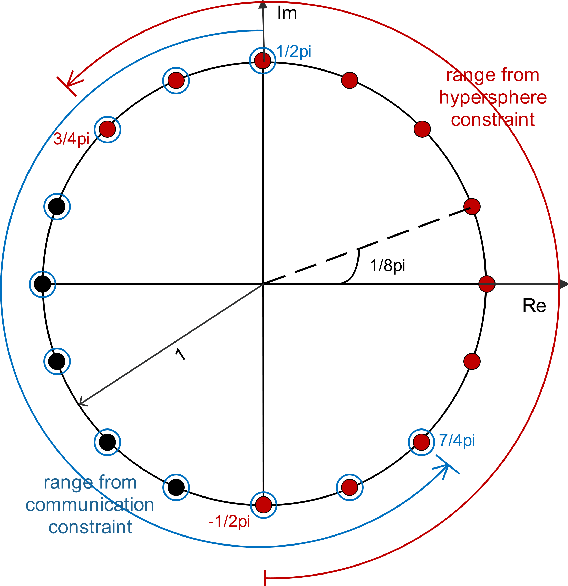
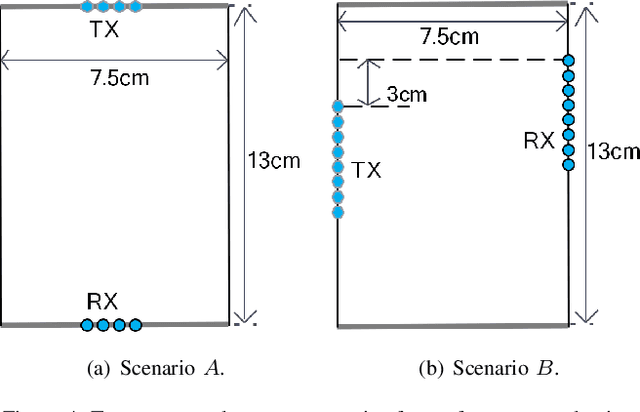
Abstract:This paper presents discrete codebook synthesis methods for self-interference (SI) suppression in a mmWave device, designed to support FD ISAC. We formulate a SINR maximization problem that optimizes the RX and TX codewords, aimed at suppressing the near-field SI signal while maintaining the beamforming gain in the far-field sensing directions. The formulation considers the practical constraints of discrete RX and TX codebooks with quantized phase settings, as well as a TX beamforming gain requirement in the specified communication direction. Under an alternating optimization framework, the RX and TX codewords are iteratively optimized, with one fixed while the other is optimized. When the TX codeword is fixed, we show that the RX codeword optimization problem can be formulated as an integer quadratic fractional programming (IQFP) problem. Using Dinkelbach's algorithm, we transform the problem into a sequence of subproblems in which the numerator and the denominator of the objective function are decoupled. These subproblems, subject to discrete constraints, are then efficiently solved by the spherical search (SS) method. This overall approach is referred to as FP-SS. When the RX codeword is fixed, the TX codeword optimization problem can similarly be formulated as an IQFP problem, whereas an additional TX beamforming constraint for communication needs to be considered. The problem is solved through Dinkelbach's transformation followed by the constrained spherical search (CSS), and we refer to this approach as FP-CSS. Finally, we integrate the FP-SS and FP-CSS methods into a joint RX-TX codebook design approach. Simulations show that, the proposed FP-SS and FP-CSS achieve the same SI suppression performance as the corresponding exhaustive search method, but with much lower complexity. Furthermore, the alternating optimization framework achieved even better SI suppression performance.
Complexity-Scalable Near-Optimal Transceiver Design for Massive MIMO-BICM Systems
Apr 12, 2025Abstract:Future wireless networks are envisioned to employ multiple-input multiple-output (MIMO) transmissions with large array sizes, and therefore, the adoption of complexity-scalable transceiver becomes important. In this paper, we propose a novel complexity-scalable transceiver design for MIMO systems exploiting bit-interleaved coded modulation (termed MIMO-BICM systems). The proposed scheme leverages the channel bidiagonalization decomposition (CBD), based on which an optimization framework for the precoder and post-processor is developed for maximizing the mutual information (MI) with finite-alphabet inputs. Particularly, we unveil that the desired precoder and post-processor behave distinctively with respect to the operating signal-to-noise ratio (SNR), where the equivalent channel condition number (ECCN) serves as an effective indicator for the overall achievable rate performance. Specifically, at low SNRs, diagonal transmission with a large ECCN is advantageous, while at high SNRs, uniform subchannel gains with a small ECCN are preferred. This allows us to further propose a low-complexity generalized parallel CBD design (GP-CBD) based on Givens rotation according to a well-approximated closed-form performance metric on the achievable rates that takes into account the insights from the ECCN. Numerical results validate the superior performance of the proposed scheme in terms of achievable rate and bit error rate (BER), compared to state-of-the-art designs across various modulation and coding schemes (MCSs).
Fundamental Limits of Hierarchical Secure Aggregation with Cyclic User Association
Mar 07, 2025Abstract:Secure aggregation is motivated by federated learning (FL) where a cloud server aims to compute an averaged model (i.e., weights of deep neural networks) of the locally-trained models of numerous clients, while adhering to data security requirements. Hierarchical secure aggregation (HSA) extends this concept to a three-layer network, where clustered users communicate with the server through an intermediate layer of relays. In HSA, beyond conventional server security, relay security is also enforced to ensure that the relays remain oblivious to the users' inputs (an abstraction of the local models in FL). Existing study on HSA assumes that each user is associated with only one relay, limiting opportunities for coding across inter-cluster users to achieve efficient communication and key generation. In this paper, we consider HSA with a cyclic association pattern where each user is connected to $B$ consecutive relays in a wrap-around manner. We propose an efficient aggregation scheme which includes a message design for the inputs inspired by gradient coding-a well-known technique for efficient communication in distributed computing-along with a highly nontrivial security key design. We also derive novel converse bounds on the minimum achievable communication and key rates using information-theoretic arguments.
Group Sparsity Methods for Compressive Space-Frequency Channel Estimation and Spatial Equalization in Fluid Antenna System
Mar 03, 2025



Abstract:Fluid Antenna System (FAS) unlocks unprecedented flexibility in wireless channel optimization through spatial reconfigurability. However, its practical deployment is hindered by the coupled challenges posed by high-dimensional channel estimation and real-time position optimization. This paper bridges wireless propagation physics with compressed sensing theory to address these challenges through three aspects. First, we establish a group-sparse recovery framework for space-frequency characteristics (SFC) in FAS, formally characterizing leakage-induced sparsity degradation from limited aperture and bandwidth as a structured group-sparsity problem. By deriving dictionary-adapted group restricted isometry property (D-GRIP), we prove tight recovery bounds for a convex $\ell_1/\ell_2$-mixed norm optimization formulation that preserves leakage-aware sparsity patterns. Second, we develop a Descending Correlation Group Orthogonal Matching Pursuit (DC-GOMP) algorithm that systematically relaxes leakage constraints to reduce subcoherence. This approach enables robust FSC recovery with accelerated convergence and superior performance compared to conventional compressive sensing methods like OMP or GOMP. Third, we formulate spatial equalization (SE) as a mixed-integer linear programming (MILP) problem, ensuring optimality through the branch-and-bound method. To achieve real-time implementability while maintaining near-optimal performance, we complement this with a greedy algorithm. Simulation results demonstrate the proposed channel estimation algorithm effectively resolves energy misallocation and enables recovery of weak details, achieving superior recovery accuracy and convergence rate. The SE framework suppresses deep fading phenomena and reduces hardware deployment overhead while maintaining equivalent link reliability.
Holographic MIMO Multi-Cell Communications
Feb 23, 2025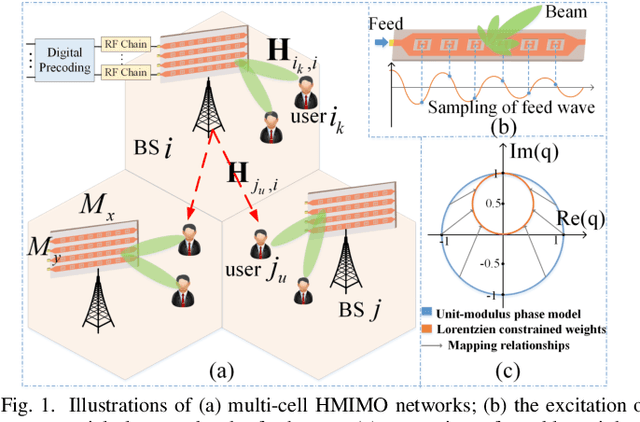
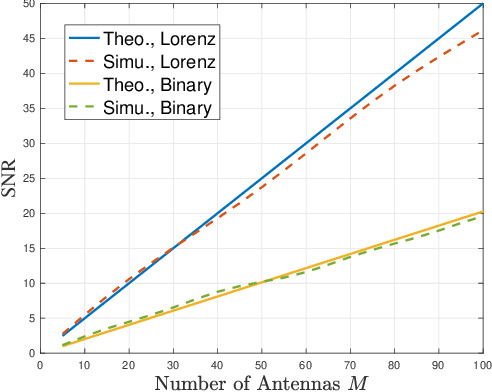
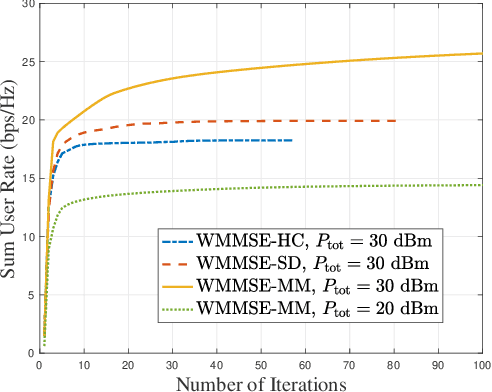
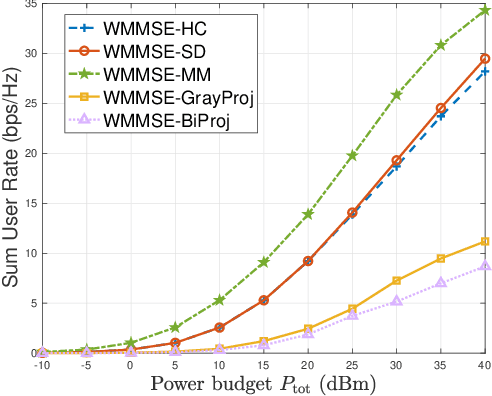
Abstract:Metamaterial antennas are appealing for next-generation wireless networks due to their simplified hardware and much-reduced size, power, and cost. This paper investigates the holographic multiple-input multiple-output (HMIMO)-aided multi-cell systems with practical per-radio frequency (RF) chain power constraints. With multiple antennas at both base stations (BSs) and users, we design the baseband digital precoder and the tuning response of HMIMO metamaterial elements to maximize the weighted sum user rate. Specifically, under the framework of block coordinate descent (BCD) and weighted minimum mean square error (WMMSE) techniques, we derive the low-complexity closed-form solution for baseband precoder without requiring bisection search and matrix inversion. Then, for the design of HMIMO metamaterial elements under binary tuning constraints, we first propose a low-complexity suboptimal algorithm with closed-form solutions by exploiting the hidden convexity (HC) in the quadratic problem and then further propose an accelerated sphere decoding (SD)-based algorithm which yields global optimal solution in the iteration. For HMIMO metamaterial element design under the Lorentzian-constrained phase model, we propose a maximization-minorization (MM) algorithm with closed-form solutions at each iteration step. Furthermore, in a simplified multiple-input single-output (MISO) scenario, we derive the scaling law of downlink single-to-noise (SNR) for HMIMO with binary and Lorentzian tuning constraints and theoretically compare it with conventional fully digital/hybrid arrays. Simulation results demonstrate the effectiveness of our algorithms compared to benchmarks and the benefits of HMIMO compared to conventional arrays.
 Add to Chrome
Add to Chrome Add to Firefox
Add to Firefox Add to Edge
Add to Edge